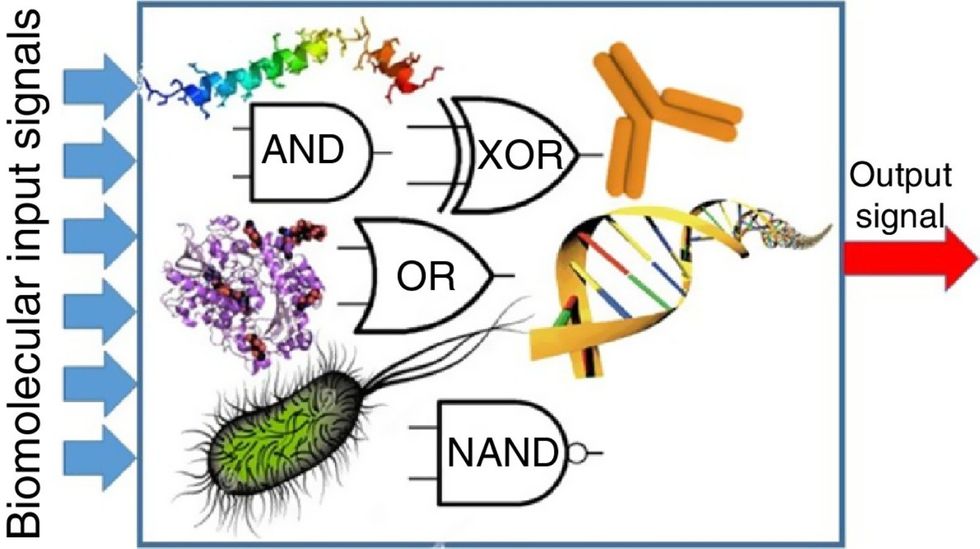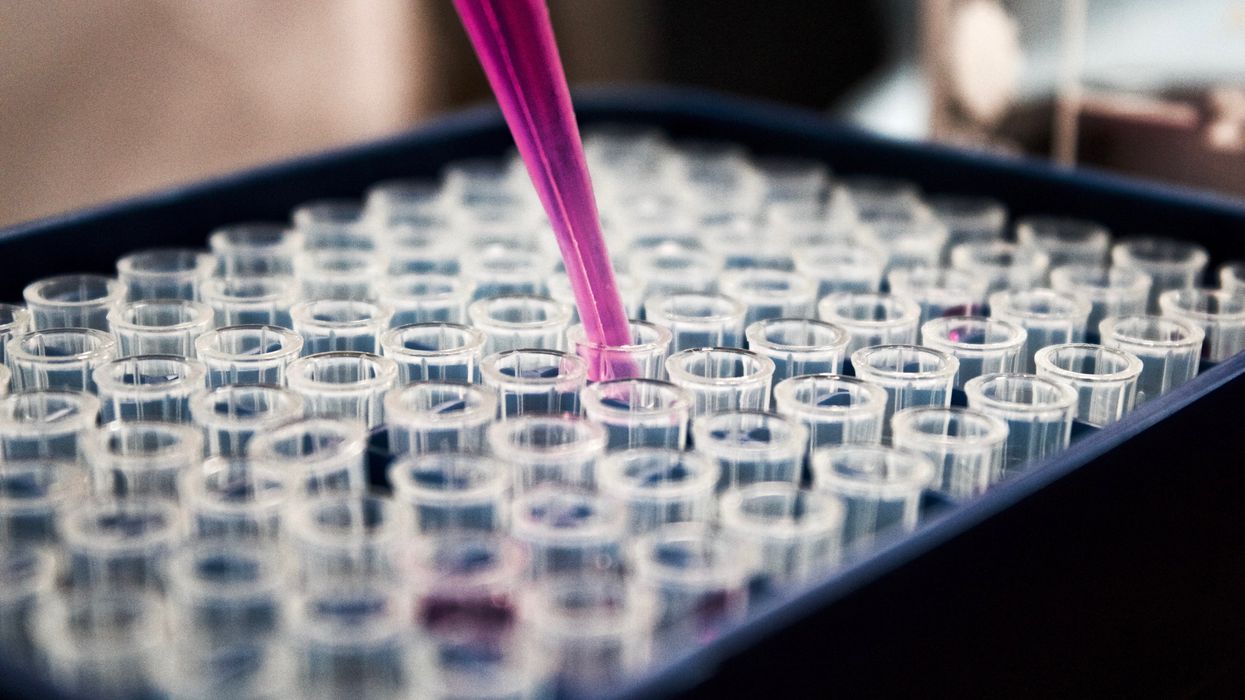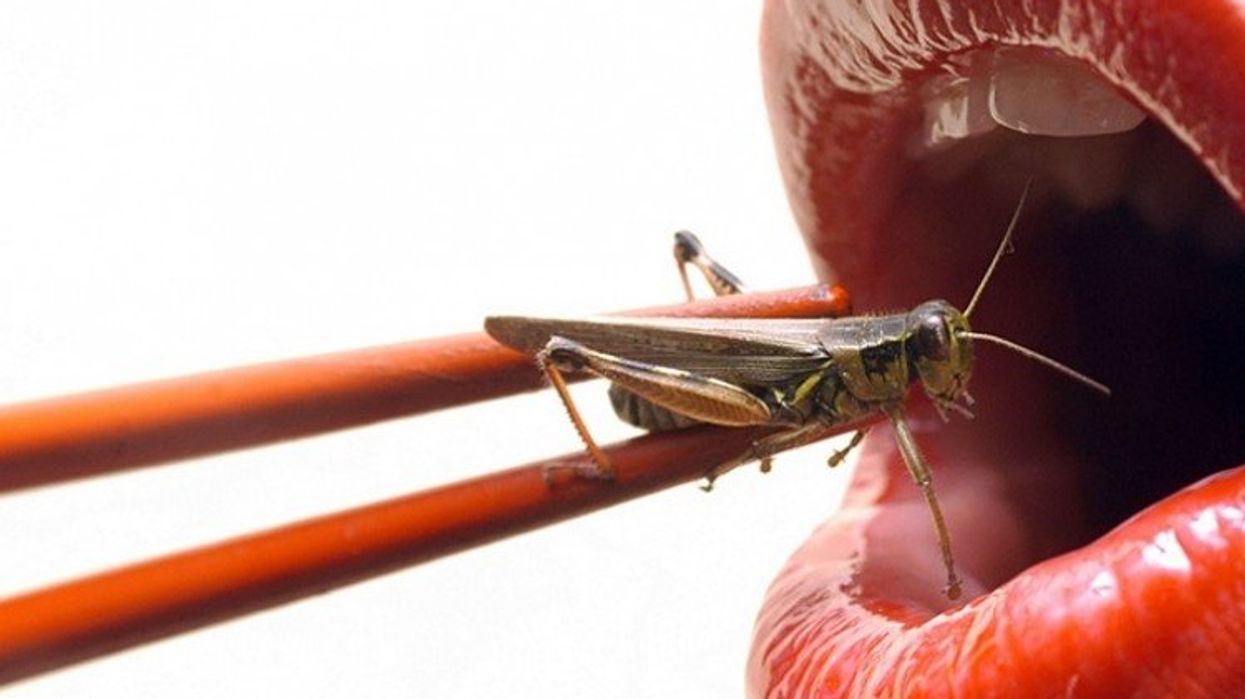Science Fact vs. Science Fiction: Can You Tell the Difference?

A portrait of skepticism while reading information online.
Today's growing distrust of science is not an academic problem. It can be a matter of life and death.
Take, for example, the tragic incident in 2016 when at least 10 U.S. children died and over 400 were sickened after they tried homeopathic teething medicine laced with a poisonous herb called "deadly nightshade." Carried by CVS, Walgreens, and other major American pharmacies, the pills contained this poison based on the alternative medicine principle of homeopathy, the treatment of medical conditions by tiny doses of natural substances that produce symptoms of disease.
Such "alternative medicines" take advantage of the lack of government regulation and people's increasing hostility toward science.
These children did not have to die. Numerous research studies show that homeopathy does not work. Despite this research, homeopathy is a quickly-growing multi-billion dollar business.
Such "alternative medicines" take advantage of the lack of government regulation and people's increasing hostility toward science. Polling shows that the number of people who believe that science has "made life more difficult" increased by 50 percent from 2009 to 2015. According to a 2017 survey, only 35 percent of respondents have "a lot" of trust in scientists; the number of people who do "not at all" trust scientists increased by over 50 percent from a similar poll conducted in December 2013.
Children dying from deadly nightshade is only one consequence of this crisis of trust. For another example, consider the false claim that vaccines cause autism. This belief has spread widely across the US, and led to a host of problems. For instance, measles was practically eliminated in the US by 2000. However, in recent years outbreaks of measles have been on the rise, driven by parents failing to vaccinate their children in a number of communities.
The Internet Is for… Misinformation
The rise of the Internet, and more recently social media, is key to explaining the declining public confidence in science.
Before the Internet, the information accessible to the general public about any given topic usually came from experts. For instance, researchers on autism were invited to talk on mainstream media, they wrote encyclopedia articles, and they authored books distributed by large publishers.
The Internet has enabled anyone to be a publisher of content, connecting people around the world with any and all sources of information. On the one hand, this freedom is empowering and liberating, with Wikipedia a great example of a highly-curated and accurate source on the vast majority of subjects. On the other, anyone can publish a blog piece making false claims about links between vaccines and autism or the effectiveness of homeopathic medicine. If they are skilled at search engine optimization, or have money to invest in advertising, they can get their message spread widely. Russia has done so extensively to influence elections outside of its borders, whether in the E.U. or the U.S.
Unfortunately, research shows that people lack the skills for differentiating misinformation from true information. This lack of skills has clear real-world effects: U.S. adults believed 75 percent of fake news stories about the 2016 US Presidential election. The more often someone sees a piece of misinformation, the more likely they are to believe it.
To make matters worse, we all suffer from a series of thinking errors such as the confirmation bias, our tendency to look for and interpret information in ways that conform to our intuitions.
Blogs with falsehoods are bad enough, but the rise of social media has made the situation even worse. Most people re-share news stories without reading the actual article, judging the quality of the story by the headline and image alone. No wonder research has indicated that misinformation spreads as much as 10 times faster and further on social media than true information. After all, creators of fake news are free to devise the most appealing headline and image, while credible sources of information have to stick to factual headlines and images.
To make matters worse, we all suffer from a series of thinking errors such as the confirmation bias, our tendency to look for and interpret information in ways that conform to our intuitions and preferences, as opposed to the facts. Our inherent thinking errors combined with the Internet's turbine power has exploded the prevalence of misinformation.
So it's no wonder we see troubling gaps between what scientists and the public believe about issues like climate change, evolution, genetically modified organisms, and vaccination.
What Can We Do?
Fortunately, there are proactive steps we can take to address the crisis of trust in science and academia. The Pro-Truth Pledge, founded by a group of behavioral science experts (including myself) and concerned citizens, calls on public figures, organizations, and private citizens to commit to 12 behaviors listed on the pledge website that research in behavioral science shows correlate with truthfulness.
Signers are held accountable through a crowdsourced reporting and evaluation mechanism while getting reputational rewards because of their commitment. The scientific consensus serves as a key measure of credibility, and the pledge encourages pledge-takers to recognize the opinions of experts - especially scientists - as more likely to be true when the facts are disputed.
The pledge "really does seem to change one's habits," encouraging signers to have attitudes "of honesty and moral sincerity."
Launched in December 2016, the pledge has surprising traction. Over 6200 private citizens took the pledge. So did more than 500 politicians, including members of US state legislatures Eric Nelson (PA), James White (TX), and Ogden Driskell (WY), and national politicians such as members of U.S. Congress Beto O'Rourke (TX), Matt Cartwright (PA), and Marcia Fudge (OH). Over 700 other public figures, such as globally-known public intellectuals Peter Singer, Steven Pinker, Michael Shermer, and Jonathan Haidt, took the pledge, as well as 70 organizations such as Media Bias/Fact Check, Fugitive Watch, Earth Organization for Sustainability, and One America Movement.
The pledge is effective in changing behaviors. A candidate for Congress, Michael Smith, took the Pro-Truth Pledge. He later posted on his Facebook wall a screenshot of a tweet by Donald Trump criticizing minority and disabled children. However, after being called out that the tweet was a fake, he went and searched Trump's feed. He could not find the original tweet, and while Trump may have deleted it, the candidate edited his own Facebook post to say, "Due to a Truth Pledge I have taken, I have to say I have not been able to verify this post." He indicated that he would be more careful with future postings.
U.S. Army veteran and pledge-taker John Kirbow described how the pledge "really does seem to change one's habits," helping push him both to correct his own mistakes with an "attitude of humility and skepticism, and of honesty and moral sincerity," and also to encourage "friends and peers to do so as well."
His experience is confirmed by research on the pledge. Two research studies at Ohio State University demonstrated the effectiveness of the pledge in changing the behavior of pledge-takers to be more truthful with a strong statistical significance.
Taking the pledge yourself, and encouraging people you know and your elected representatives to do the same, is an easy and effective way to fight misinformation and to promote a culture that values the truth.
DNA- and RNA-based electronic implants may revolutionize healthcare
The test tubes contain tiny DNA/enzyme-based circuits, which comprise TRUMPET, a new type of electronic device, smaller than a cell.
Implantable electronic devices can significantly improve patients’ quality of life. A pacemaker can encourage the heart to beat more regularly. A neural implant, usually placed at the back of the skull, can help brain function and encourage higher neural activity. Current research on neural implants finds them helpful to patients with Parkinson’s disease, vision loss, hearing loss, and other nerve damage problems. Several of these implants, such as Elon Musk’s Neuralink, have already been approved by the FDA for human use.
Yet, pacemakers, neural implants, and other such electronic devices are not without problems. They require constant electricity, limited through batteries that need replacements. They also cause scarring. “The problem with doing this with electronics is that scar tissue forms,” explains Kate Adamala, an assistant professor of cell biology at the University of Minnesota Twin Cities. “Anytime you have something hard interacting with something soft [like muscle, skin, or tissue], the soft thing will scar. That's why there are no long-term neural implants right now.” To overcome these challenges, scientists are turning to biocomputing processes that use organic materials like DNA and RNA. Other promised benefits include “diagnostics and possibly therapeutic action, operating as nanorobots in living organisms,” writes Evgeny Katz, a professor of bioelectronics at Clarkson University, in his book DNA- And RNA-Based Computing Systems.
While a computer gives these inputs in binary code or "bits," such as a 0 or 1, biocomputing uses DNA strands as inputs, whether double or single-stranded, and often uses fluorescent RNA as an output.
Adamala’s research focuses on developing such biocomputing systems using DNA, RNA, proteins, and lipids. Using these molecules in the biocomputing systems allows the latter to be biocompatible with the human body, resulting in a natural healing process. In a recent Nature Communications study, Adamala and her team created a new biocomputing platform called TRUMPET (Transcriptional RNA Universal Multi-Purpose GatE PlaTform) which acts like a DNA-powered computer chip. “These biological systems can heal if you design them correctly,” adds Adamala. “So you can imagine a computer that will eventually heal itself.”
The basics of biocomputing
Biocomputing and regular computing have many similarities. Like regular computing, biocomputing works by running information through a series of gates, usually logic gates. A logic gate works as a fork in the road for an electronic circuit. The input will travel one way or another, giving two different outputs. An example logic gate is the AND gate, which has two inputs (A and B) and two different results. If both A and B are 1, the AND gate output will be 1. If only A is 1 and B is 0, the output will be 0 and vice versa. If both A and B are 0, the result will be 0. While a computer gives these inputs in binary code or "bits," such as a 0 or 1, biocomputing uses DNA strands as inputs, whether double or single-stranded, and often uses fluorescent RNA as an output. In this case, the DNA enters the logic gate as a single or double strand.
If the DNA is double-stranded, the system “digests” the DNA or destroys it, which results in non-fluorescence or “0” output. Conversely, if the DNA is single-stranded, it won’t be digested and instead will be copied by several enzymes in the biocomputing system, resulting in fluorescent RNA or a “1” output. And the output for this type of binary system can be expanded beyond fluorescence or not. For example, a “1” output might be the production of the enzyme insulin, while a “0” may be that no insulin is produced. “This kind of synergy between biology and computation is the essence of biocomputing,” says Stephanie Forrest, a professor and the director of the Biodesign Center for Biocomputing, Security and Society at Arizona State University.

Biocomputing circles are made of DNA, RNA, proteins and even bacteria.
Evgeny Katz
The TRUMPET’s promise
Depending on whether the biocomputing system is placed directly inside a cell within the human body, or run in a test-tube, different environmental factors play a role. When an output is produced inside a cell, the cell's natural processes can amplify this output (for example, a specific protein or DNA strand), creating a solid signal. However, these cells can also be very leaky. “You want the cells to do the thing you ask them to do before they finish whatever their businesses, which is to grow, replicate, metabolize,” Adamala explains. “However, often the gate may be triggered without the right inputs, creating a false positive signal. So that's why natural logic gates are often leaky." While biocomputing outside a cell in a test tube can allow for tighter control over the logic gates, the outputs or signals cannot be amplified by a cell and are less potent.
TRUMPET, which is smaller than a cell, taps into both cellular and non-cellular biocomputing benefits. “At its core, it is a nonliving logic gate system,” Adamala states, “It's a DNA-based logic gate system. But because we use enzymes, and the readout is enzymatic [where an enzyme replicates the fluorescent RNA], we end up with signal amplification." This readout means that the output from the TRUMPET system, a fluorescent RNA strand, can be replicated by nearby enzymes in the platform, making the light signal stronger. "So it combines the best of both worlds,” Adamala adds.
These organic-based systems could detect cancer cells or low insulin levels inside a patient’s body.
The TRUMPET biocomputing process is relatively straightforward. “If the DNA [input] shows up as single-stranded, it will not be digested [by the logic gate], and you get this nice fluorescent output as the RNA is made from the single-stranded DNA, and that's a 1,” Adamala explains. "And if the DNA input is double-stranded, it gets digested by the enzymes in the logic gate, and there is no RNA created from the DNA, so there is no fluorescence, and the output is 0." On the story's leading image above, if the tube is "lit" with a purple color, that is a binary 1 signal for computing. If it's "off" it is a 0.
While still in research, TRUMPET and other biocomputing systems promise significant benefits to personalized healthcare and medicine. These organic-based systems could detect cancer cells or low insulin levels inside a patient’s body. The study’s lead author and graduate student Judee Sharon is already beginning to research TRUMPET's ability for earlier cancer diagnoses. Because the inputs for TRUMPET are single or double-stranded DNA, any mutated or cancerous DNA could theoretically be detected from the platform through the biocomputing process. Theoretically, devices like TRUMPET could be used to detect cancer and other diseases earlier.
Adamala sees TRUMPET not only as a detection system but also as a potential cancer drug delivery system. “Ideally, you would like the drug only to turn on when it senses the presence of a cancer cell. And that's how we use the logic gates, which work in response to inputs like cancerous DNA. Then the output can be the production of a small molecule or the release of a small molecule that can then go and kill what needs killing, in this case, a cancer cell. So we would like to develop applications that use this technology to control the logic gate response of a drug’s delivery to a cell.”
Although platforms like TRUMPET are making progress, a lot more work must be done before they can be used commercially. “The process of translating mechanisms and architecture from biology to computing and vice versa is still an art rather than a science,” says Forrest. “It requires deep computer science and biology knowledge,” she adds. “Some people have compared interdisciplinary science to fusion restaurants—not all combinations are successful, but when they are, the results are remarkable.”
Crickets are low on fat, high on protein, and can be farmed sustainably. They are also crunchy.
In today’s podcast episode, Leaps.org Deputy Editor Lina Zeldovich speaks about the health and ecological benefits of farming crickets for human consumption with Bicky Nguyen, who joins Lina from Vietnam. Bicky and her business partner Nam Dang operate an insect farm named CricketOne. Motivated by the idea of sustainable and healthy protein production, they started their unconventional endeavor a few years ago, despite numerous naysayers who didn’t believe that humans would ever consider munching on bugs.
Yet, making creepy crawlers part of our diet offers many health and planetary advantages. Food production needs to match the rise in global population, estimated to reach 10 billion by 2050. One challenge is that some of our current practices are inefficient, polluting and wasteful. According to nonprofit EarthSave.org, it takes 2,500 gallons of water, 12 pounds of grain, 35 pounds of topsoil and the energy equivalent of one gallon of gasoline to produce one pound of feedlot beef, although exact statistics vary between sources.
Meanwhile, insects are easy to grow, high on protein and low on fat. When roasted with salt, they make crunchy snacks. When chopped up, they transform into delicious pâtes, says Bicky, who invents her own cricket recipes and serves them at industry and public events. Maybe that’s why some research predicts that edible insects market may grow to almost $10 billion by 2030. Tune in for a delectable chat on this alternative and sustainable protein.
Listen on Apple | Listen on Spotify | Listen on Stitcher | Listen on Amazon | Listen on Google
Further reading:
More info on Bicky Nguyen
https://yseali.fulbright.edu.vn/en/faculty/bicky-n...
The environmental footprint of beef production
https://www.earthsave.org/environment.htm
https://www.watercalculator.org/news/articles/beef-king-big-water-footprints/
https://www.frontiersin.org/articles/10.3389/fsufs.2019.00005/full
https://ourworldindata.org/carbon-footprint-food-methane
Insect farming as a source of sustainable protein
https://www.insectgourmet.com/insect-farming-growing-bugs-for-protein/
https://www.sciencedirect.com/topics/agricultural-and-biological-sciences/insect-farming
Cricket flour is taking the world by storm
https://www.cricketflours.com/
https://talk-commerce.com/blog/what-brands-use-cricket-flour-and-why/

Lina Zeldovich has written about science, medicine and technology for Popular Science, Smithsonian, National Geographic, Scientific American, Reader’s Digest, the New York Times and other major national and international publications. A Columbia J-School alumna, she has won several awards for her stories, including the ASJA Crisis Coverage Award for Covid reporting, and has been a contributing editor at Nautilus Magazine. In 2021, Zeldovich released her first book, The Other Dark Matter, published by the University of Chicago Press, about the science and business of turning waste into wealth and health. You can find her on http://linazeldovich.com/ and @linazeldovich.

